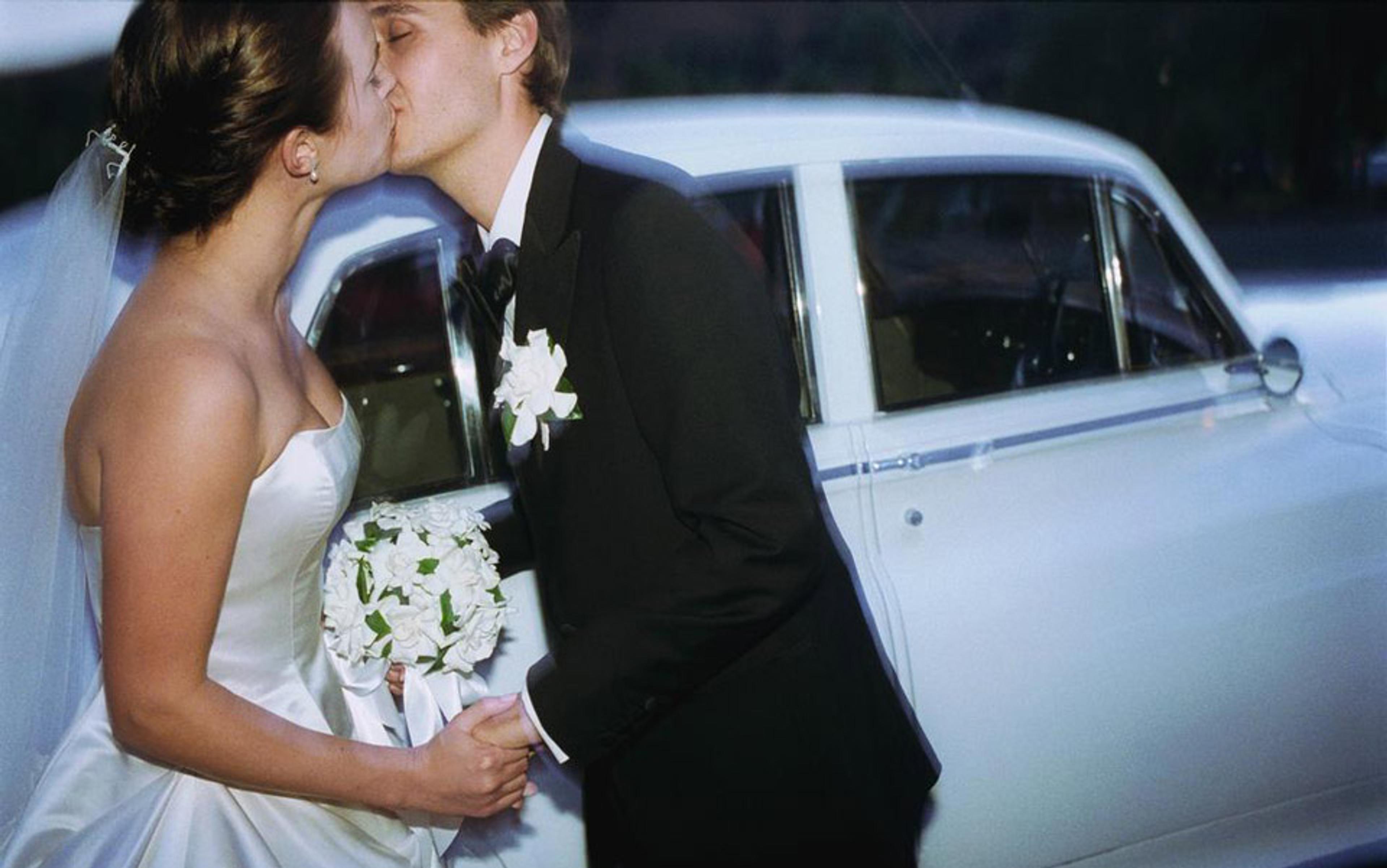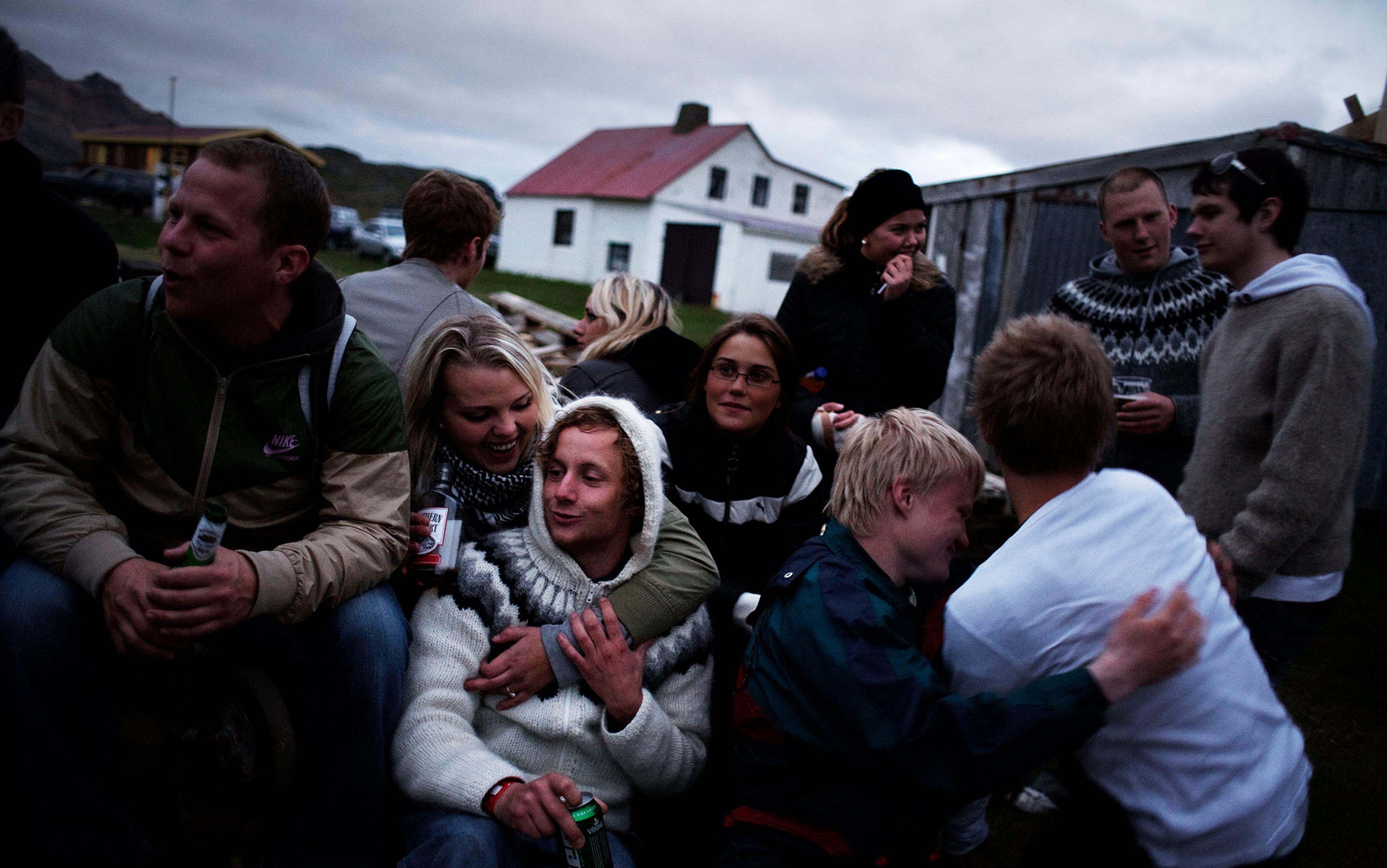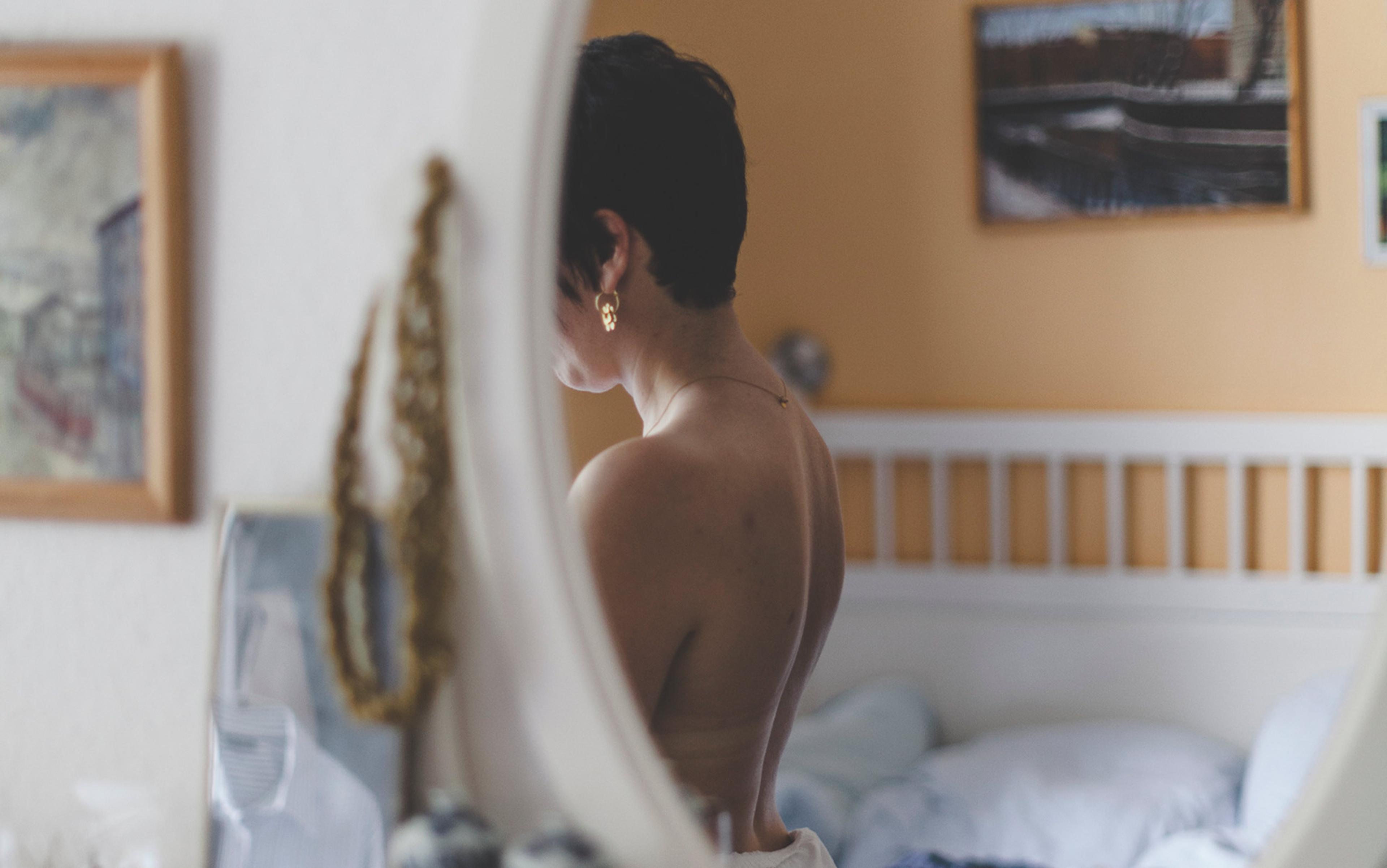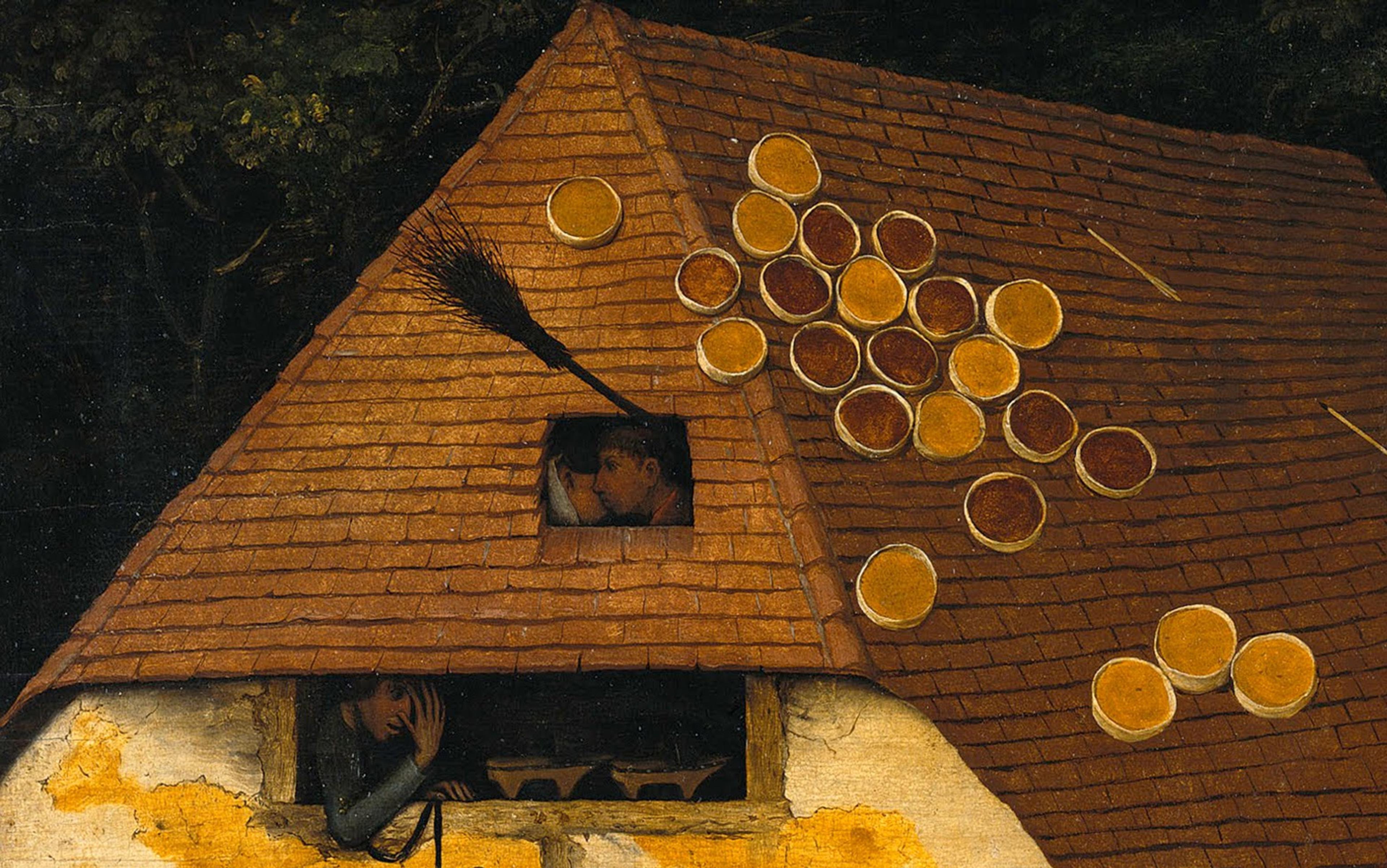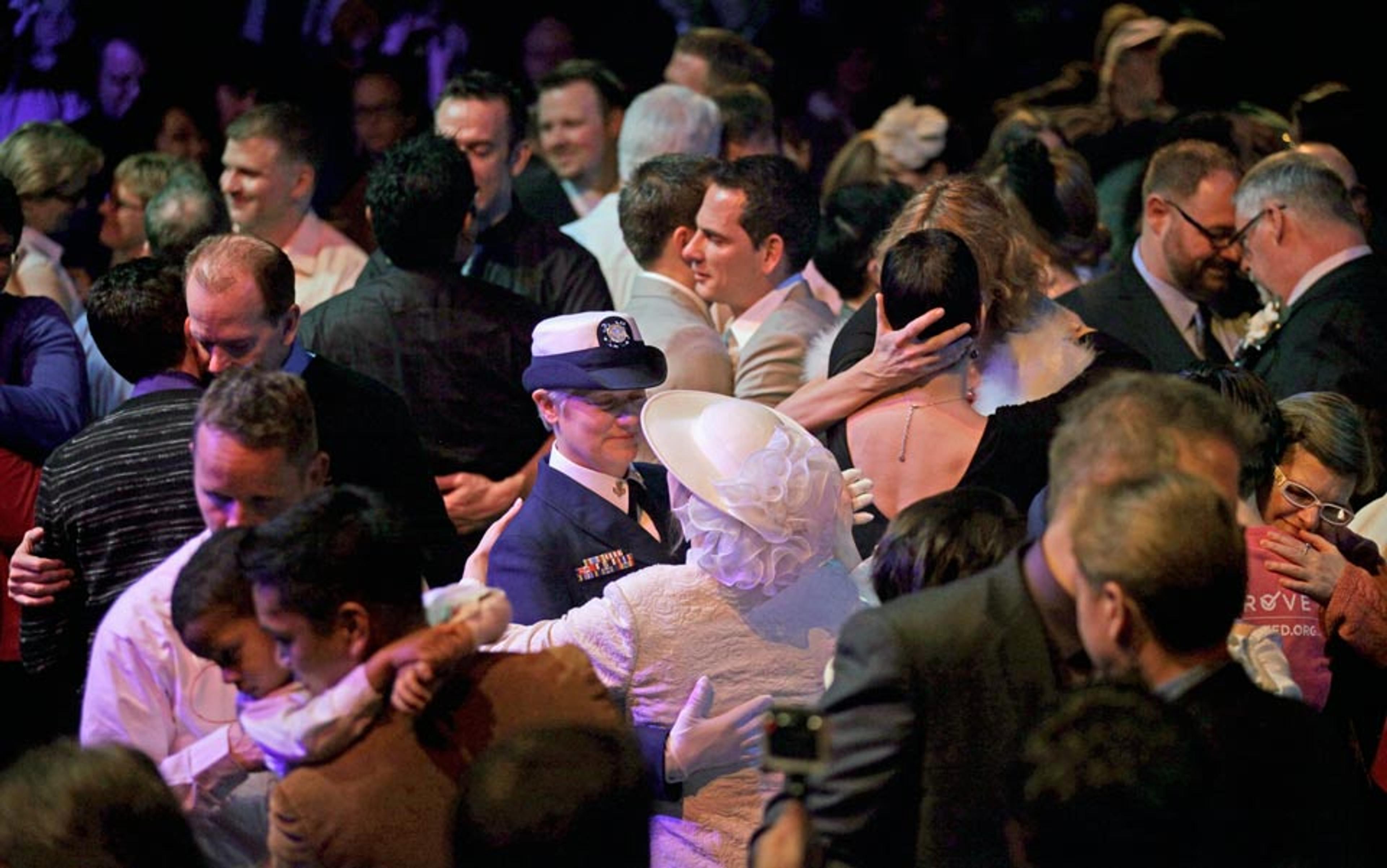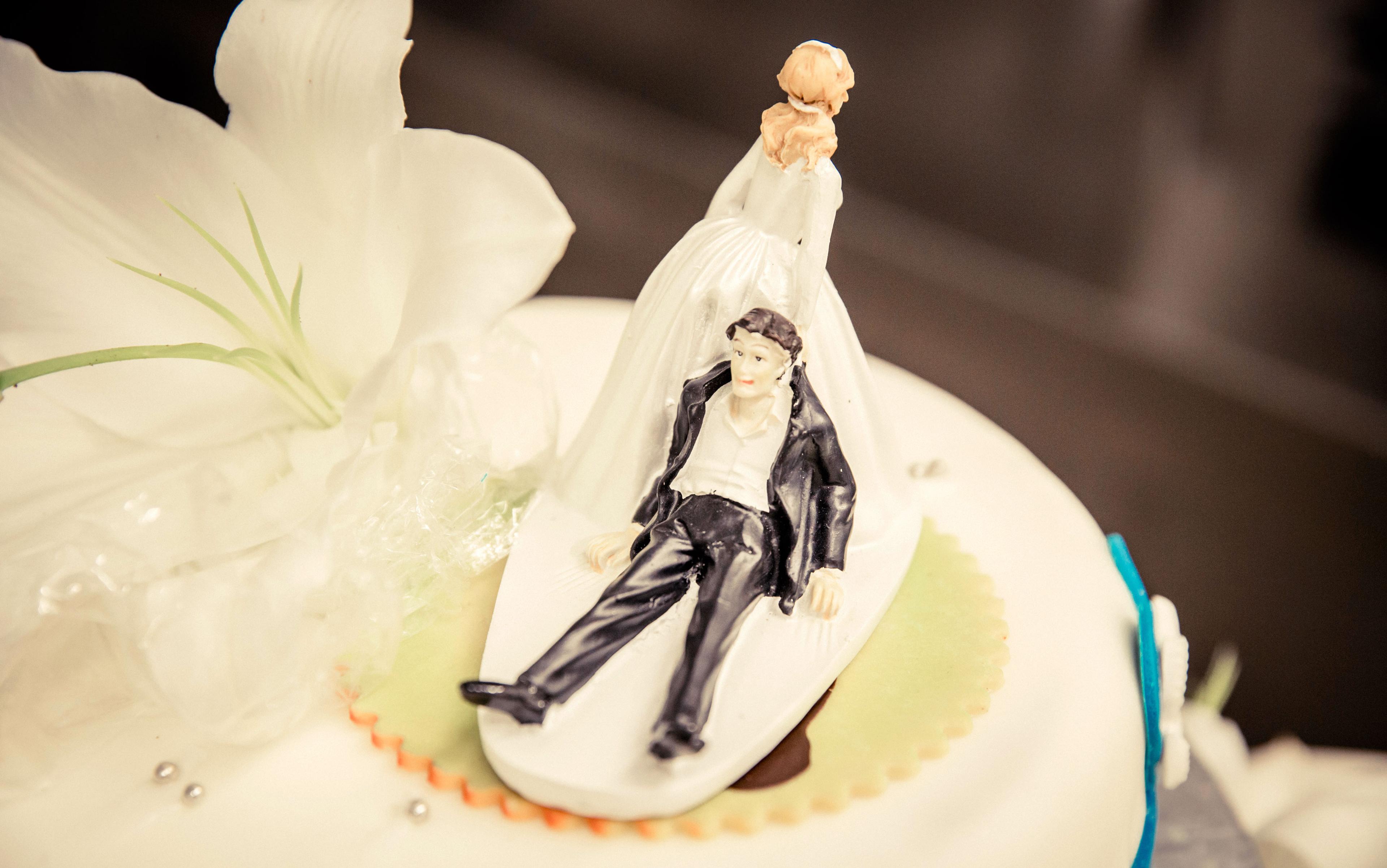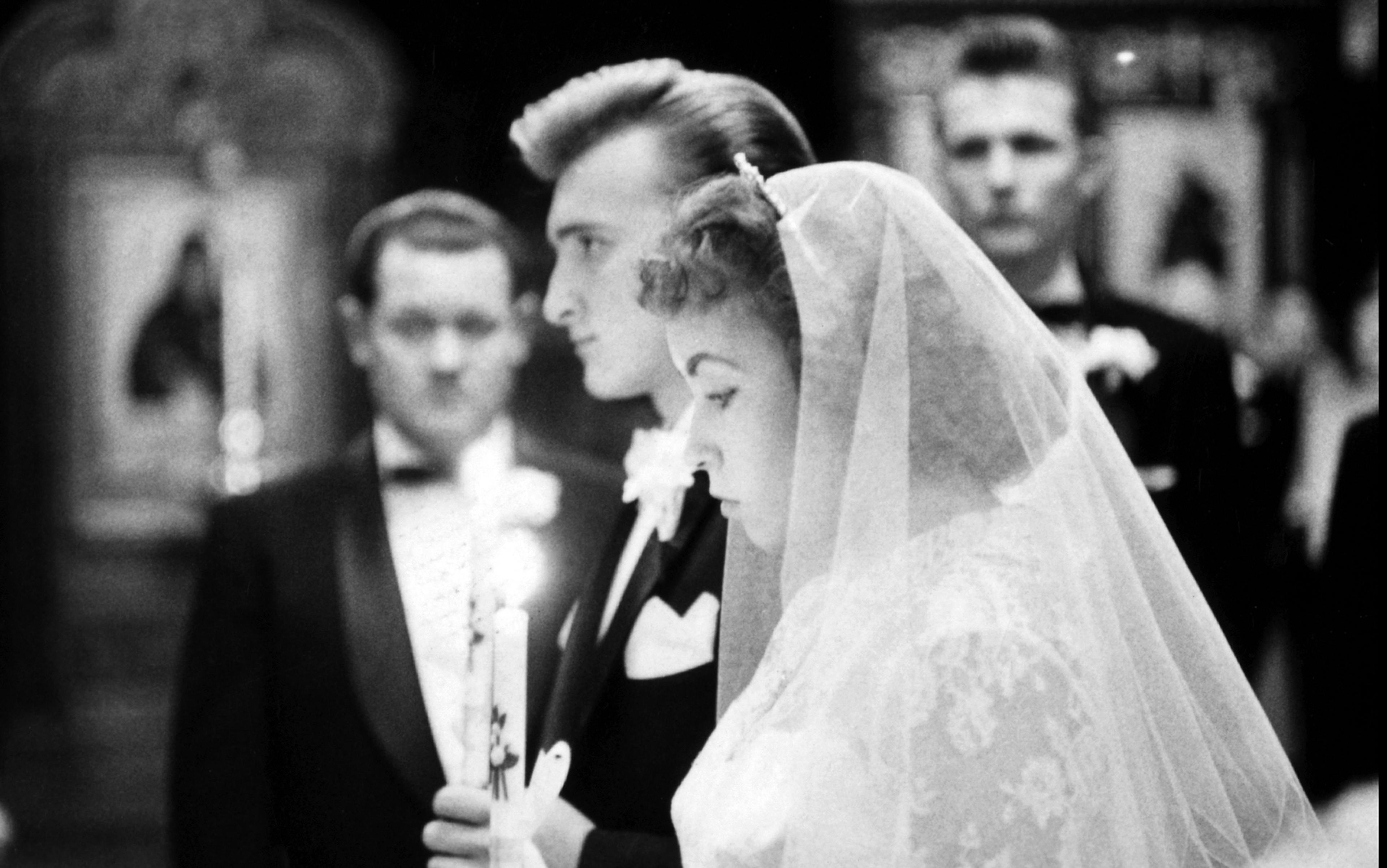Colleen, an associate director at a large pharmaceutical company, daydreamed about getting married on a beach. By the time she began planning her own ceremony in 2012, she’d been to her fair share of weddings, including several at the New Jersey Shore, one in Las Vegas, and one in Costa Rica that required a four-hour jeep trek deep into the rainforest. And though she loved the idea of getting married with the backdrop of the surf and sand, she and her husband Chris got hitched in customary fashion, a short distance from where they grew up in Philadelphia. More important than the location was their desire to have the important people in their lives present, including elderly grandparents who would not have been able to make it if they had married away.
Colleen and Chris’s wedding was traditional, with a full Catholic ceremony and a lavish reception attended by more than 200 family and friends. Colleen wore a beautiful white dress with a satin bodice and layered chiffon skirt. The reception featured an elaborate cocktail hour with hors d’oeuvres and a signature cocktail, a seated meal, a multi-tiered cake, a band, and dancing. Colleen and Chris married like most people in the United States marry, with lavish elements taken for granted as ‘traditional’. The white gown. The formal ceremony where couples publicly pledge their love. The towering cake. The grand reception with dinner, drinks, and dancing.
It is easy to imagine this wedding as a mirror of how couples have wed for centuries. Yet, marrying this way is a relatively recent trend. Prior to the mid-20th century, weddings of this ilk were the domain only of the wealthy. Most people could not afford to spend money on extravagant festivities and so married simply, wearing their Sunday best with an afternoon party or dinner at home. In fact, prior to Queen Victoria selecting white satin as the material for her wedding dress in 1840, gowns were rarely white. The elite copied this fashion first, which trickled down to the masses from the 1950s onwards.
In Brides, Inc.: American Weddings and the Business of Tradition (2006), Vicki Howard shows that, for most of US history, weddings were private affairs planned by family, with few ritualised conventions. Elite families had large formal weddings that served as an indicator of social status. Major social changes in the 20th century, namely the postwar era of prosperity and the emergence of a wedding industry, set the climate for businesspeople to create convincing rhetoric in favour of a consumerist wedding.
Howard details the push from department stores, jewellers, magazine publishers and wedding consultants as critical in inventing wedding ‘traditions’ such as the diamond engagement ring, the expensive white wedding gown, and the catered reception. Jewellers played an especially important role. The diamond titan De Beers featured images of soldiers or couples separated in wartime, and suggested that protecting marriage and family was what the war was really all about. As Howard notes, the diamond engagement ring was a ‘pledge’ of love from a soldier before he went overseas and until the couple was free to marry in a safer time.
The ‘traditional’ wedding was marketed to consumers of all socioeconomic backgrounds. Savvy businesspeople encouraged brides in particular to see these formerly uncommon and inaccessible elements of the wedding as absolute necessities. Toothpaste ads appeared featuring brides with gleaming white grins. Bride dolls encouraged girls to embrace the culture of heterosexual romance, priming them to become future consumers in the wedding industry.
Wedding marketing filtered into other industries and media, as the sociologist Chrys Ingraham noted in her book White Weddings: Romancing Heterosexuality in Popular Culture (1999). Countless films and television commercials show us what weddings are supposed to look like, and there have been at least half a dozen different US reality TV series focused on shopping for a wedding gown, in addition to many others that focus on proposals, wedding planning, or the wedding day.
The more these wedding standards appeared in popular culture, the more they became institutionalised. And indeed, sumptuous weddings have become big business in the latter decades of the 20th and into the 21st century. According to a 2014 survey of 13,000 brides and grooms on the wedding planning website TheKnot.com, US couples spend approximately $30,000 on their weddings, with the average in places like Manhattan considerably higher, at about $87,000.
Modern weddings place brides and grooms as the stars of an elaborate production, with social media as the distribution channel
Grandeur is part of the fantasy, as Cele C Otnes and Elizabeth Pleck write in their book Cinderella Dreams: The Allure of the Lavish Wedding (2003), because couples (and their families) view the wedding as an opportunity for indulgence and fantasy. Women find this way of marrying appealing because it fits with popular and consumer culture representations of brides as deserving of attention and excess, of love and romance. The wedding is also perceived as an investment in the future. The more memorable and spectacular the wedding, the more the couple (and their families) have to look back on and see how much they invested in the start of their relationship.
A lavish wedding allows brides and grooms to be celebrities for a day. In an age where celebrity is so coveted that people will marry strangers, eat insects, date naked or share the details of their private lives for a moment of televised fame, the wedding industry plays on the desire for recognition and validation. By treating themselves, their families and friends to a hedonistic, luxurious party in celebration of themselves, couples can experience a celebrity lifestyle, for a day, weekend or throughout their engagement.
Modern weddings place brides and grooms as the stars of an elaborate production, with social media as the distribution channel. That means every bride can be Diana, and every wedding is televised on Facebook and Instagram. That’s why wedding planning is so much more than throwing a good party. Instead, it’s scouring Pinterest, The Knot and other wedding blogs in order to create a unique, detail-oriented extravaganza that guests will be impressed by, and think of fondly, and that will represent the couple on social media. There are few times in life where people are allowed to brazenly say: ‘Look how creative and special we are!’
But wedding planning isn’t all attention-seeking and consumerism. Marrying in public, in front of an audience of family and friends, also allows the rare opportunity for deep symbolic action, which is why weddings have functioned as sites of resistance for traditional norms. In the 1950s and ‘60s, as more and more women went to college, worked before getting married, and became more independent, some couples started to exert more individual decision making in their weddings. Karen Dunak’s As Long as We Both Shall Love: The White Wedding in Postwar America (2013) explains that weddings are not empty rituals of excess, but avenues for self-expression and innovation. Dunak’s research illuminates what weddings mean to couples, what motivates them to accept or reject white-wedding conventions, and shows the uniqueness of seemingly cookie-cutter celebrations.
During the past 30 to 40 years, couples have taken control of wedding planning and used weddings to contest wedding traditions, ideologies about gender, sexuality and marriage. No longer about the union of two families or about the parents of the betrothed, weddings are sites for personal expression. As evidence of this, Dunak shares the stories of several high-profile brides and grooms in eras of change. She notes how in 1984 Luci Baines Johnson, the younger daughter of the former US president Lyndon Johnson, chose to have a ‘private’ second wedding with her family and friends, rather than one that was televised to share with the US people, like her first. Luci’s decision was about her choice to make the wedding what she wanted, rather than a public ceremony of a former president’s daughter.
Dunak shows what meaning alternative weddings had for couples in the latter part of the 20th and into the 21st century. In the 1970s, hippies rejected church weddings, formal receptions and white gowns in favour of comfortable clothes, an emphasis on the wedding as a celebration, and personal, self-composed vows that endorsed their views. They did not necessarily reject the ritual of weddings or the institution of marriage entirely, but instead did it their way.
‘The focus was on the two of us, rather than who was coming or what the table decorations looked like’
And in the 1990s and into the 2000s, when gay couples embraced the white wedding, they simultaneously declared the legitimacy of their unions and their entitlement to do what any heterosexual couple had been free to do for centuries. The practice of gay weddings brought same-sex relationships into public view and promoted acceptance through participation in consumer culture and heightened social visibility. Familiar and revered wedding customs provide a comfortable location and rite that grants recognition and validates love relationships — a blend of modern and traditional, personal and political, in a socially palatable format.
Even today, when the lavish wedding has become the norm, some couples reject it in favour of a smaller or more distinctive celebration that represents their unique relationship. Couples seek out ‘destination celebrations’ or marry in ceremonies that put their passions or hobbies to the forefront, like the couple I met who got married in Jamaica, at a ceremony attended by only a few close family members.
Carrie the bride explained that she and her husband Barry selected Jamaica for its laid-back feel, in stark contrast to the traditional wedding. ‘It fit with the philosophy of our relationship,’ she said. ‘The focus was on the two of us and the commitment we were making to each other, rather than about who was coming or what the table decorations looked like. It was about making a commitment to each other and starting our lives together in this beautiful place.’ Carrie emphasised that their wedding was about Barry and her as a couple. They had discussed the alternatives, their lack of religiosity, and the complications associated with marrying in their hometown but not in a church. Their parents were divorced, not especially amicably, and they knew that a traditional wedding for the sake of tradition would have been uncomfortable for everyone.
Although recent research suggests the rate of remarriage is decreasing, data from the US Census notes that approximately 40% of marriages involve someone who was previously married. As this represents a large segment of the wedding population, the way that couples re-marry is also an important aspect of changes in modern weddings. I interviewed Kara, from Lambertville in New Jersey, whose first wedding followed the new-traditional style to the letter. When her marriage did not end with the ‘happily-ever-after’ which a lavish wedding is supposed to produce, she could not imagine finding lasting, true love. Nor could she conceive of going through the planning and the grandiosity of an event again, only to have it end in disaster. But then she met Damon and they fell into steady, binding love, developing a connection that eclipsed her memory of devastation and restored her faith. Kara realised that she wanted to marry him and celebrate the triumph of their union in a way that did justice to their story.
Because they had both been married before, Kara and Damon initially wanted a simple union, until another possibility presented itself, this time in India. Kara was working as a missionary at a hospice in Delhi and Damon went to visit her at the end of her stay. They’d planned to get married on their return home, in Pennsylvania, with a small ceremony and dinner. But when Kara’s new friends heard of Damon’s visit, they insisted on throwing them a Hindu wedding, replete with traditional Indian wedding clothing – a beautiful red sari for Kara and a custom-made, embellished kurta for Damon.
When presented with the opportunity to marry in this way, in a place where love and marriage are not only revered but celebrated with rich symbolism, and where, as Kara said, ‘everything is more intense, and the sacred is ever-present in daily life in ways that it is not in the US’, they found themselves eager to participate in this type of ceremony. Having waged a hard and unexpected path to each other, they found their love validated and understood in India. It made sense to them to wed there, even if it meant doing so among relative strangers and with a ceremony conducted by a Hindu priest in a language neither of them understood. In fact, Kara said the ceremony transcended language: the music, the smells, the sweets – it all seemed just right.
all the photographs feature brides in white gowns and grooms in tuxedos or suits: eloping now means marrying alone rather than surreptitiously
Many cultures have formal rituals to mark the passage to adulthood, but contemporary Western society lacks universal rites of transition. Weddings and their associated rituals can sometimes fill this gap. As I noted in my book Something Old, Something Bold: Bridal Showers and Bachelorette Parties (2006), even though the women I interviewed viewed bridal showers as out-dated, boring and stilted, they did not like the idea of doing away with them. They recognized bridal showers as a time for women to come together not only to help provide the couple with what they need to establish their household, but to show how much they care about their bride-to-be and celebrate their relationship with her.
The women I interviewed recognised and appreciated the importance of ritual in modern life as a means of solidifying and demonstrating social ties, and showing respect for relationships that are often complicated by geography, career and family. And in bachelor and bachelorette parties, committed brides-to-be and grooms-to-be act out, often in dramatic form, the idea of a ‘last night of freedom’ as a way of acknowledging what they are giving up in marriage.
Like couples who seek out remote destinations or marry in extreme fashion while skydiving or waterskiing, more and more modern weddings express personal identity. As culture becomes more focused on individual choices rather than concern for collective needs or desires, extreme weddings become more popular as statements not only of individuality but also of the supremacy of the dyadic relationship. Still, like lavish weddings, extreme weddings are bolstered by industry. Companies such as Yosemite Weddings (inside Yosemite National Park, in California) help couples ‘plan’ for elopement. They capitalise on couples who want a personally meaningful ceremony in an extreme location, combining a spectacle with the sacred. In contrast to the days when elopement meant running off hastily to get married in secret, all the photographs on the company’s website feature brides in white gowns, with styled hair and make-up, and grooms in tuxedos or suits, suggesting advance planning. Eloping now means marrying alone rather than surreptitiously.
Extreme weddings are still recognisable as weddings, with traditional wedding attire and photography. Both extreme and lavish weddings are public performances, dramatically staged with carefully chosen costumes. The wedding photograph retains both the tradition of documenting the ceremony for a lasting memory, but it also serves to include those who were not there. Even when it is just the couple and celebrants, the act of photographing or videoing the ceremony shows the intention to re-view and share the show with others. This is particularly true in an age of digital and social media where such sharing can happen not only instantaneously but also with a wider network of viewers than in the past.
In a society where people are validated by numbers of likes and re-tweets and where weddings are grand spectacles, publishing images from the big day for the admiration of others is de rigueur. As with our culture at large, extreme weddings and ‘destination’ weddings are both more private and more public.
Throughout the past century, the trends of the elite have filtered down to the public who, inspired by media and commercial culture, adopt and adapt, mirror and modify. Unlike weddings in the past, where people married as a means of uniting families or property, or where weddings were about deferring to parents’ expectations, contemporary couples use weddings as sites for personal expression and distinction. Yet, even extreme or destination weddings incorporate the past in the present. Though weddings can be sites of resistance of traditional values or gender roles, they are rarely sites of rebellion. Ultimately, as couples publicly pledge their love, they pledge allegiance to convention and to the new.
